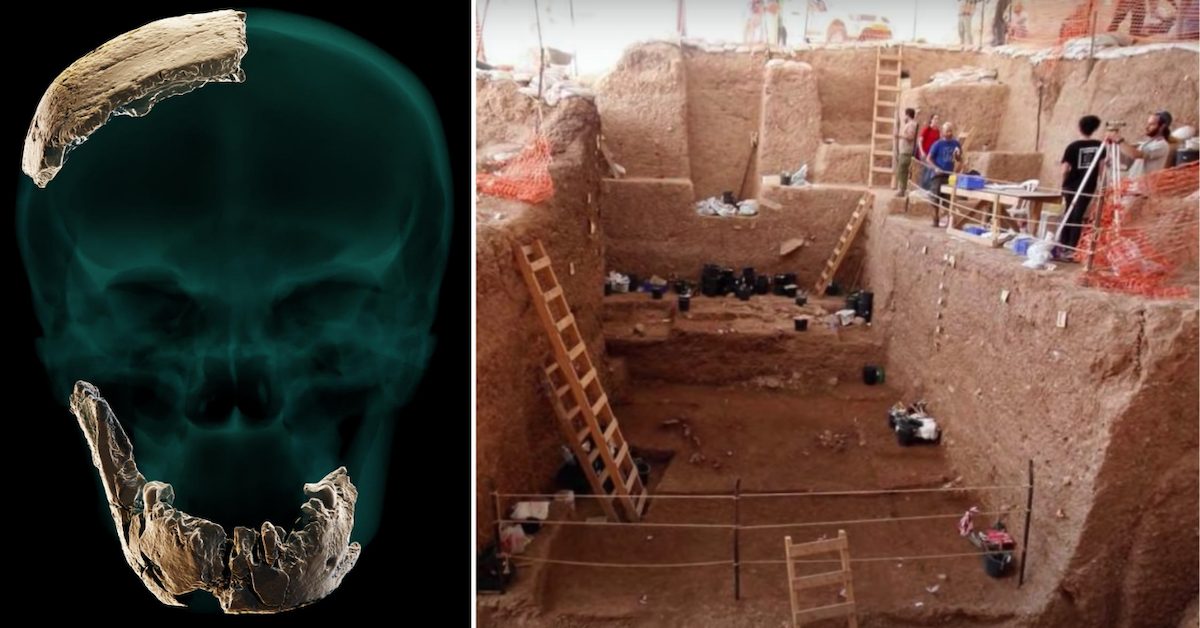It has long been believed Neanderthals originated in Europe and migrated south to escape expanding glacial conditions. However, a recent study published in the journal Science has put that theory into question, with the discovery of an older human ancestor, the Nesher Ramla Homo type.
An intriguing find
A research team excavating a karst depression in Ramla, Israel, uncovered fossils indicating the history of Neanderthals goes back further than previously thought.
The team, led by Professor Israel Hershkovitz of Tel Aviv University, uncovered five skull fragments and a near-complete lower jawbone from an individual who lived between 140,000 and 120,000 years ago. The skull was flat, and the jawbone featured large teeth and no chin.
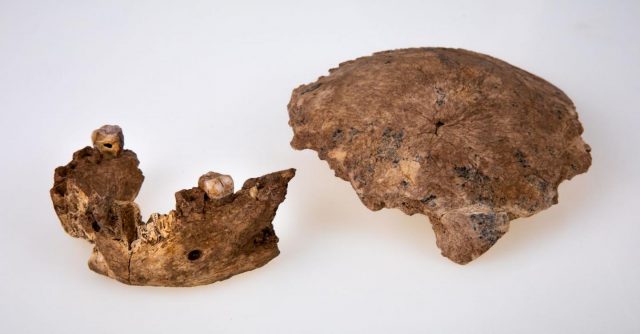
The fragments were found eight meters below the surface, among stone tools and bones from animals such as horses, aurochs, and fallow deer. The bones feature a combination of archaic Homo and Neanderthal features, suggesting they belong to a species that later evolved into the Neanderthals of Europe and the archaic humans of Asia.
The tools show the species, called the “Nesher Ramla Homo type,” was adept at mastering technology long since linked to Homo sapiens and Neanderthals. They were effective hunters of small and large game, used fire, and cooked their meat.
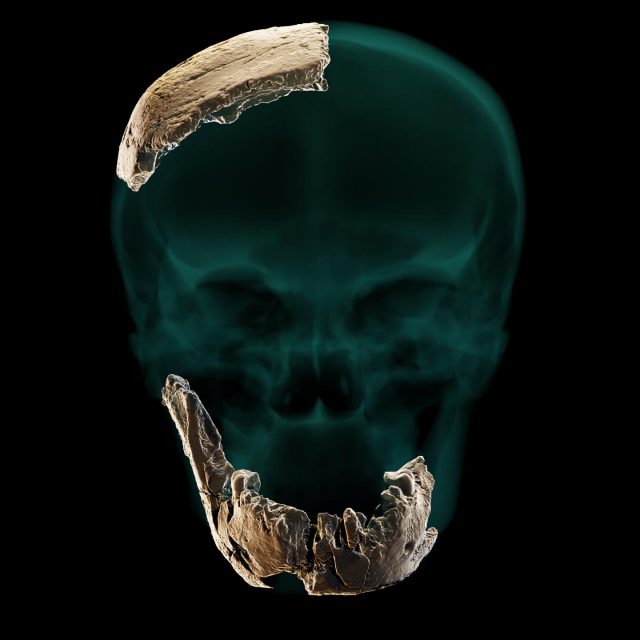
The use of such tools shows a potential interaction between species of Homo sapiens, according to Dr. Yossi Zaidner: “This suggests that there were interactions between [the Nesher Ramla and Homo sapiens]. We think it is only possible to learn how to make tools through visual or oral learning.
“Our findings suggest that human evolution is far from simple and involved many dispersals, contacts and interactions between different species of human,” he added.
Archaeological excavation underway
The research team began excavating the site between 2010 and 2011, where archaeological deposits from the Middle Palaeolithic period were uncovered. This includes evidence of lithic cores and Levallois tools. The excavation has continued to occur over the years, with the latest discovery being the most intriguing to date.
It’s believed the remains found this month represent one of the “last survivors” of this ancient group. It has allowed for connections to be made between other specimens found in caves throughout Israel that until now had been difficult to classify. They’re dated between 420,000 and 120,000 years ago.
“This is the first time we could connect the dots between different specimens found in the Levant,” Dr. Rachel Sarig of Tel Aviv University told the BBC. “There are several human fossils from the caves of Qesem, Zuttiyeh and Tabun that date back to that time that we could not attribute to any specific known group of humans.
“But comparing their shapes to those of the newly uncovered specimen from Nesher Ramla justify their inclusion within the [new human] group,” she concluded.
Neanderthal origins put into question
The discovery of the Nesher Ramla fossils has put the Neanderthal origin theory into question. Until this most recent discovery, the oldest uncovered fossils relating to early Neanderthals were from western Europe, and were the foundation of the long-held theory Neanderthals originated in Europe and traveled south to Africa and east to Asia.
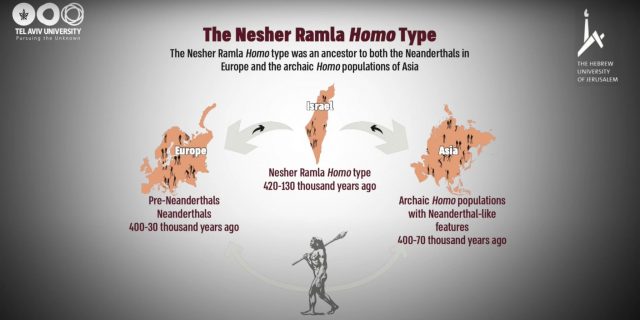
“Before these findings, most researchers believed Neanderthals to be a European story, in which small groups of Neanderthals were forced to migrate southwards to escape the spreading glaciers, with some arriving in the land of Israel about 70,000 years ago,” said Professor Hershkovitz.
“The Nesher Ramla fossils make us question this theory, suggesting that the ancestors of European Neanderthals lived in the Levant as early as 400,000 years ago, repeatedly migrating westward to Europe and eastward to Asia,” he continued. “In fact, our findings imply that the famous Neanderthals of western Europe are only the remnants of a much larger population that lived here in the Levant — and not the other way around.”
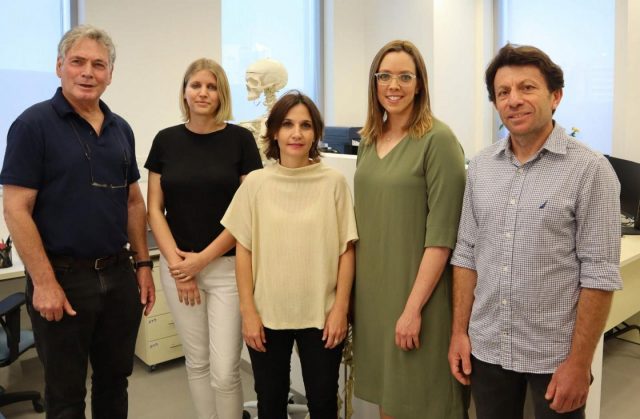
As a result, the Levant is now considered a crucial starting point for the Neanderthal evolution process. Attempts to extract DNA from the fossils have failed, meaning more research will need to be done to determine if, and at what point in history, interbreeding between Homo species occurred.
More from us: New ‘Zombie Ant Fungus’ Discovered In Amber From 50 Million Years Ago
Dr. Hila May of Tel Aviv University believes such interbreeding occurred, meaning they were the ancestors of Neanderthals: “The European Neanderthal actually began here in the Levant and migrated to Europe, while interbreeding with other groups of humans.”
